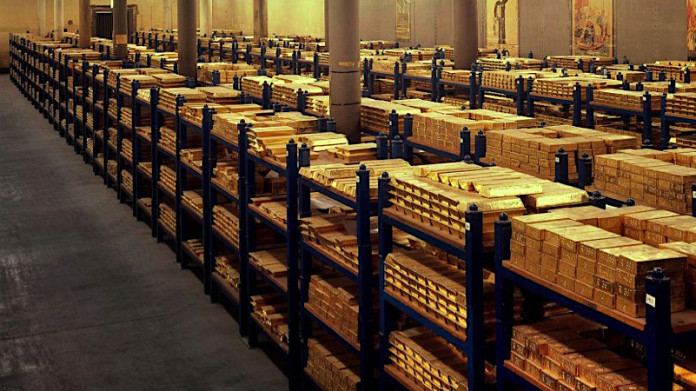
CENTRAL banks have emerged as the driving force behind gold’s record-breaking bull market, accumulating roughly 80 tons monthly worth approximately $8.5bn at current prices, according to a report by Bloomberg News.
The secretive nature of most purchases has shrouded the true scale of buying, though trade data suggests China accounts for substantial acquisitions alongside other unidentified buyers via Switzerland, said the newswire.
Central banks and sovereign wealth funds are absorbing 1,000 tons annually — at least a quarter of mined production — according to the World Gold Council.
An HSBC survey of 72 central banks in January revealed more than a third planned additional purchases in 2025, with none intending to sell. This sustained demand underpins Goldman Sachs’ year-end forecast of $3,700 per ounce, with gold trading at $3,360 on June 3rd near April’s $3,500 peak, said Bloomberg.
China’s role remains particularly opaque. “The market has speculated, again this is just speculation, that the actual net buying by China is far greater than the official data,” said Evy Hambro, head of thematic and sector investing at BlackRock and one of the world’s most influential mining investors, speaking to Bloomberg News.
Goldman Sachs estimates China has purchased an average of 40 tons monthly since 2022, based on trade data analysis. Unusually, total Chinese gold supply has exceeded withdrawals from the Shanghai Gold Exchange, raising questions about the extra bullion’s whereabouts.
The buying surge doubled after Western allies froze Russia’s foreign exchange reserves in 2022 following Ukraine’s invasion. This action prompted central banks to diversify away from dollar-denominated assets, viewing gold as insurance against geopolitical risks.
“Gold is usually considered as an insurance resource, but in this case — taking into account all the panic, the tariffs, and the reconstruction of global trade — it’s not a bad investment resource,” said Timur Suleimenov, governor of Kazakhstan’s National Bank.
Poland’s central bank governor Adam Glapinski described gold as “the safest reserve asset,” noting it remains “free from direct links to the economic policy of any country.”
The diversification trend reflects growing concerns about dollar overexposure amongst emerging market central banks, which typically hold around 6% of reserves in gold compared to roughly 75% for the US, Germany, France and Italy.
JPMorgan estimates that redirecting just 0.5% of foreign US assets could drive gold to $6,000 per ounce by 2029. Said Hambro: “The gold market is a big market, but the dollar market is enormous. A small amount moving from the dollar market to the gold has a big impact.”








